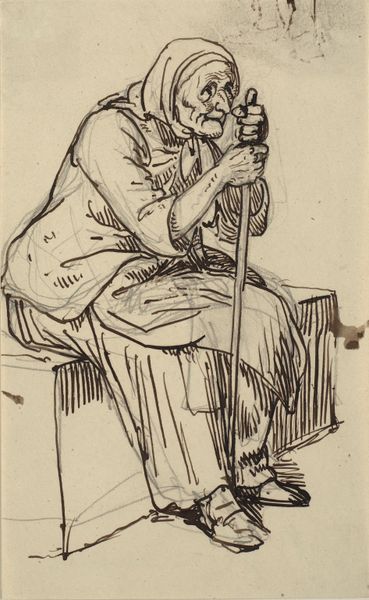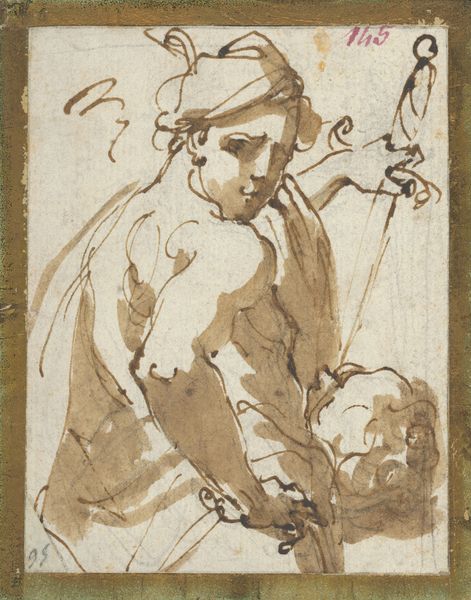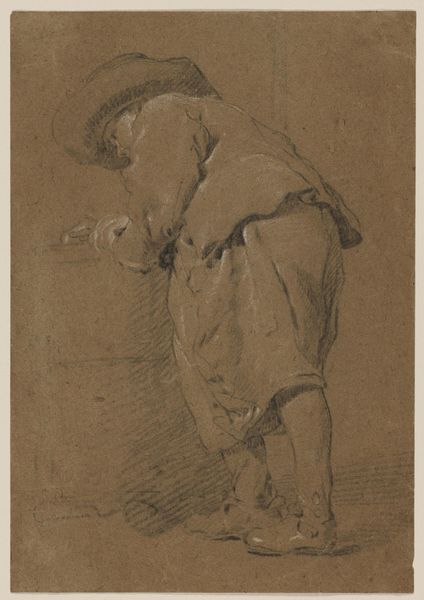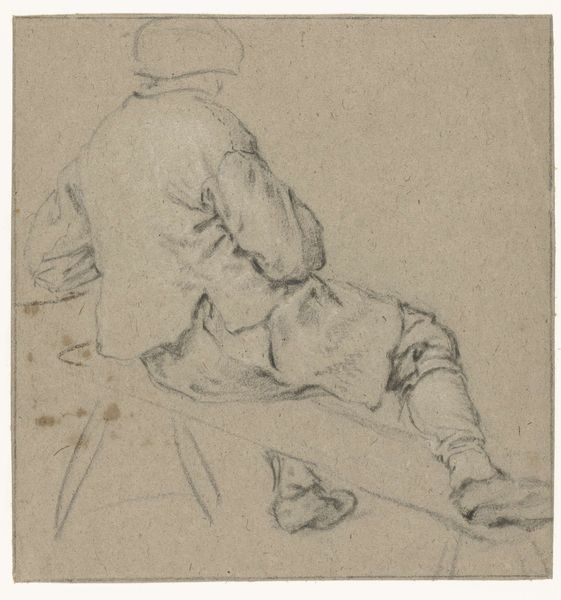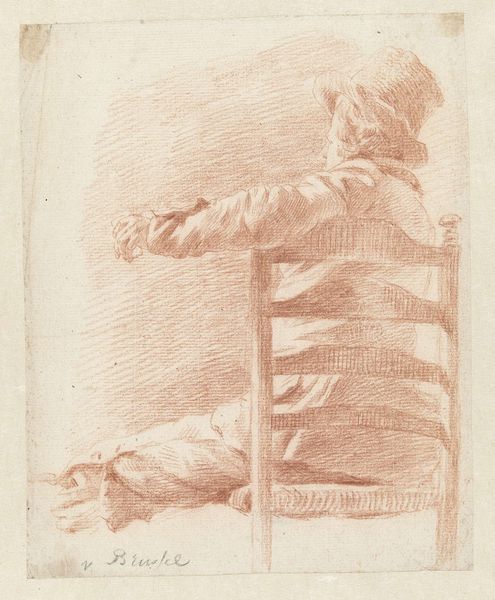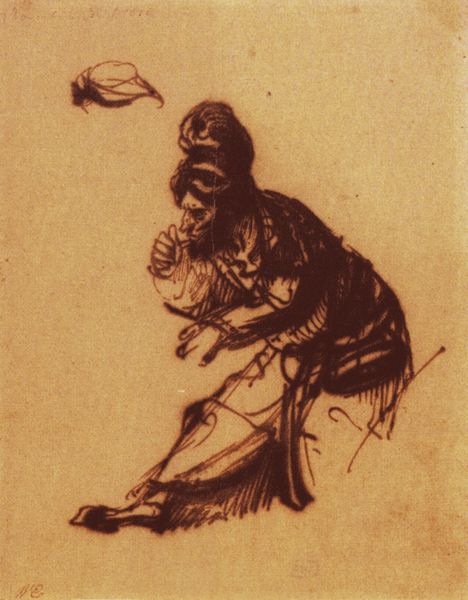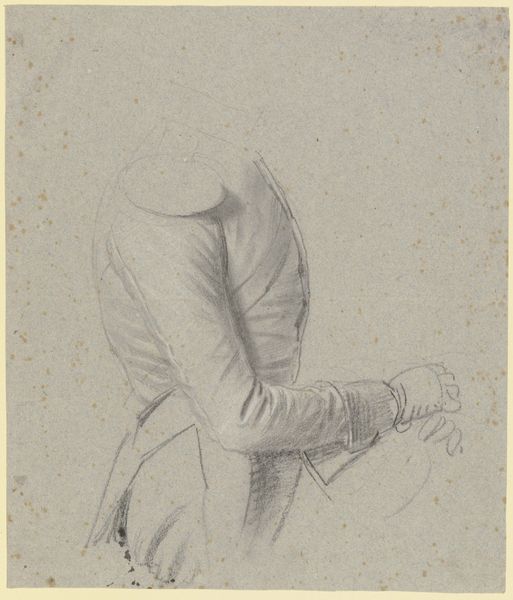
drawing, paper, ink
#
drawing
#
dutch-golden-age
#
pencil sketch
#
charcoal drawing
#
figuration
#
paper
#
ink
#
pencil drawing
#
genre-painting
Dimensions: height 79 mm, width 63 mm
Copyright: Rijks Museum: Open Domain
Curator: Here we have Adriaen van Ostade's "Zittende boer, op de rug gezien," a work whose creation falls somewhere between 1620 and 1685. This sensitive drawing resides here at the Rijksmuseum. It's rendered in ink on paper. Editor: It has this melancholic air about it. The palette is muted, almost sepia-toned, lending a somber quality. He seems burdened, slumped on that simple stool. There's a feeling of resignation emanating from this ordinary man. Curator: Indeed, the bent posture certainly contributes to that impression. While van Ostade frequently depicted peasants in lively scenes, here we see a very different kind of portrait. Note how even from the back, there is a subtle intimacy with which he captures this figure. Editor: The fact that he’s presented to us from behind feels very significant, like we’re not invited into his world, we’re kept at a distance. It reflects the way the laboring classes were often unseen or ignored by the dominant social classes. The sketch-like quality only emphasizes this. Curator: It reminds us of our historical perception of laborers, then. The averted face also directs our gaze, not to the individual's expressiveness, but instead towards the symbols of labor – the humble clothing and the weariness of his pose, signs loaded with the baggage of centuries of inequity. It evokes the ever-present themes of rural life in Dutch Golden Age art. Editor: Precisely, his unseen face hides his emotions from us but shows us that this man, hunched and alone, is possibly meant to stand for more than his mere presence, perhaps an unspoken comment on those that fueled the wealthy society. I think there's a quiet defiance embedded here. The way he stubbornly takes up space, however small. Curator: Perhaps so. Regardless, Ostade gives a potent snapshot here. The enduring appeal of these images stems, I think, from their subtle blend of observation and deeper resonances, both cultural and emotional. Editor: Ultimately, looking at him from behind prompts a question to today's public: Who still goes unseen, unacknowledged, and weighed down by circumstances largely out of their own control? Food for thought.
Comments
No comments
Be the first to comment and join the conversation on the ultimate creative platform.
